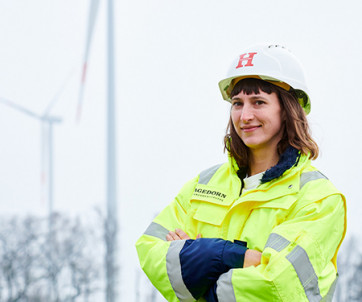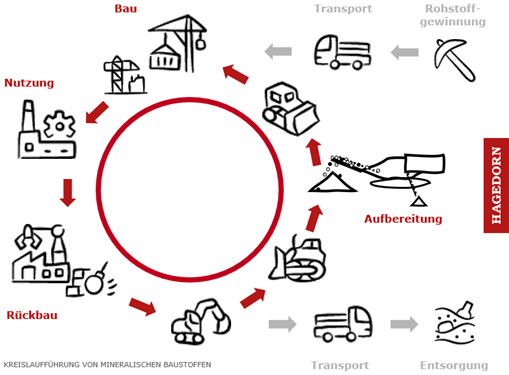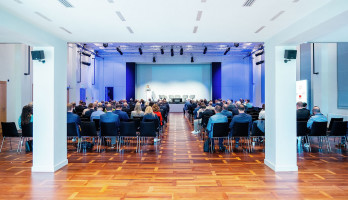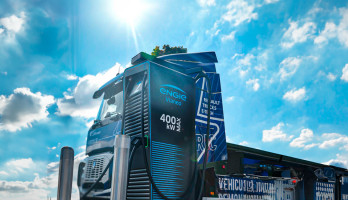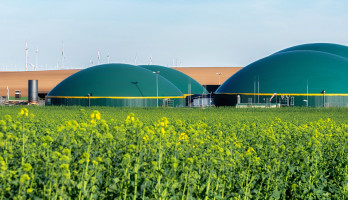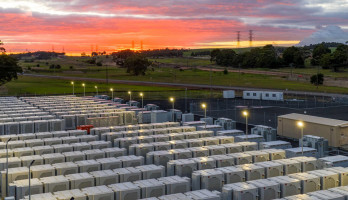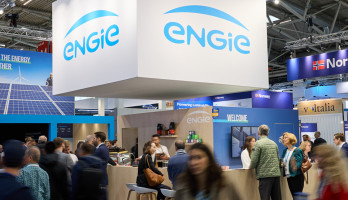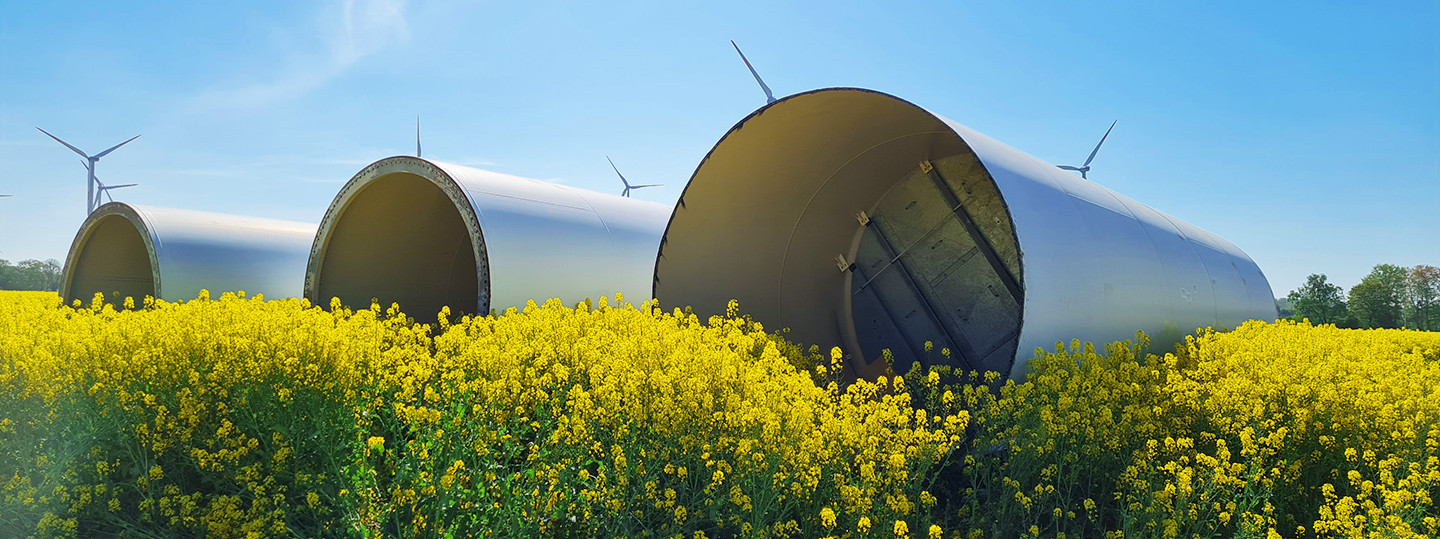
Thinking in cycles today: the dismantling of wind turbines
Spinning in circles is not necessarily a bad thing. This applies to both wind turbines and business-related systems. The modern circular economy is a forward-looking concept - not least for wind power. It is about efficiency and sustainability and the question of what happens to old turbine components and materials after repowering. Nora Wild from the Hagedorn Group, ENGIE's partner in the dismantling of wind turbines, has valuable insights. In her guest article, she explains how waste avoidance, recycling of building materials and the dismantling of wind turbines are interlinked.
Nora Wild on the circular economy and sustainability
As a project manager at Hagedorn, the fourth largest demolition company in the world and a high-performance all-round service provider in the construction sector, I see climate change as a challenge that is closely linked to global resource consumption. While the demand for natural resources is constantly increasing, they are also becoming scarcer. This leads to price increases and supply risks on the international commodity markets. In order to stop and reverse this current trend and thus stabilize the climate and economy, the EU Commission published the Circular Economy Action Plan in 2015 - an action plan for the circular economy in the European Union. The aim is to make the economy less dependent on natural raw materials. How? By using closed loops wherever possible. The circular economy is about minimizing waste, reducing emissions and limiting material and energy losses. Let's create a sustainable future for our climate and our economy!
Dismantling wind turbines: waste avoidance and legal requirements
I see waste prevention as the most important key to a sustainable future. The Act on the Promotion of the Circular Economy and Ensuring the Environmentally Sound Management of Waste (KrWG) emphasizes waste prevention as the top priority. In a waste hierarchy, prevention is placed first, followed by preparation for reuse, recycling and other forms of recovery. Only in last place is disposal. By promoting the circular economy, we need fewer raw materials. Among other things, this reduces our CO2 footprint, as the production or extraction of primary materials is often energy-intensive. In addition, primary materials are a finite resource that is gradually being used up. To counteract this, we at Hagedorn promote the recycling of waste and the reuse of products in accordance with the German Circular Economy Act. In order to implement this successfully and to strengthen the recycling of mineral construction waste even more effectively, we need to prioritize secondary construction materials in public procurement regulations. This will enable us as a company to make a greater contribution to permanently reducing the consumption of primary resources.
Construction and demolition waste - an important resource for the circular economy
Construction and demolition waste is the largest waste stream in Germany: In 2020, it amounted to more than 220 million tons. In regular monitoring reports, the Initiative Kreislaufwirtschaft Bau documents current developments in the handling of mineral construction waste for the German government. The 13th monitoring report is based on official data from the Federal Statistical Office and examines the environmental statistics for mineral construction waste in 2020. Hagedorn's recycled construction materials are obtained from such mineral construction waste. The most efficient approach is to reuse or recycle as much of the resulting material as possible directly on the construction site - this minimizes the use of new resources and our company's CO2 emissions. Materials from demolition must be processed by us for reuse - for example, crushed or screened. Since August 2023, this process has been regulated throughout Germany by the German Substitute Building Materials Ordinance (ErsatzbaustoffV) and ideally takes place on site in mobile processing plants. In 2020, a total of 76.9 million tons of recycled building materials were produced throughout Germany from the fractions of construction waste and road demolition waste. Recycled building materials covered 13.2 percent of the demand for aggregates.
Repowering as a circular concept - recycling for wind turbines
The repowering of wind turbines is based on the approach of replacing outdated wind turbines with new, more powerful models. This leads to higher electricity yields with a lower number of turbines thanks to the use of the latest technology. In this way, the energy transition can progress at a rapid pace. The recycling rates for dismantling wind turbines are already high today and are rising steadily. In the interests of the circular economy, the mineral waste produced is processed into substitute building materials and reused. Demolition material from concrete towers and foundations is crushed into recycled aggregates. Gravel from pathways and crane pads can also be reused as recycled aggregate. Excavated soil can be reinstalled as a mineral substitute building material or as soil with a soil function. Where possible, the resulting substitute building materials are used on the construction site itself as part of the construction of the new wind farm. In the event that not all recycled materials can be used there, they are used in road and traffic route construction, for example.
ENGIE supports the modern circular economy for wind power
Our Expert
